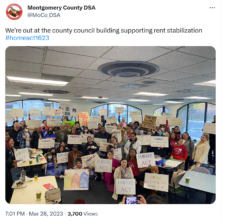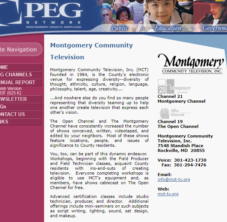The Metro Washington Area’s “Council of Governments” (MWCOG or just COG) is a regional body that says on its “About Us” page / shadow box that it is: the one place in metropolitan Washington that regularly brings leaders together to develop solutions to the region’s major challenges.
But has it developed solutions to the region’s major challenges? That record is mixed at best. Transit challenges abound. Ever try to get across the American Legion Bridge into Northern Virginia from Montgomery County, Maryland on a weekday morning? Or return in the early afternoon? That “major challenge” for the region certainly hasn’t been met by anything put forth by COG. Any update on that ol’ White’s Ferry fiasco, COG?
But I digress. The purpose of this post is to shed light on the latest “top-down, central planning” tool that COG (and Montgomery County leadership) is claiming to use for “planning initiatives” and a “data driven approach” to stuff beyond just transit.
Like a technocratic central planning master-mind one might see in Singapore, COG is attempting to use something called an “Equity Emphasis Area” map to overlay where scarce taxpayer resources should be spent:
Equity Emphasis Areas (EEAs) are a regional planning concept adopted in 2021 by the COG Board of Directors to elevate equity and inform future growth and investment decisions. As of a 2022 update, 364 of the region’s more than 1,300 census tracts are identified as EEAs, meaning they have high concentrations of low-income individuals and/or traditionally disadvantaged racial and ethnic population groups. EEAs were originally developed by the Transportation Planning Board to analyze potential impacts of its long-range transportation plan but will now be applied more broadly across disciplines, such as health, housing, and climate, as part of Region United, COG’s Metropolitan Washington Planning Framework for 2030.
What started as a Transportation Planning Board development metric has now spread beyond that simple calling and into the misguided central-planning ideas of the Montgomery County Council, led by Council President Evan Glass:
No sir, politely, “EEAs” should not be applied to “so many other aspects of policy making”. They probably shouldn’t even be applied to transit because they don’t work. That is the problem in MoCo – too many want-to-be technocrats and fraudulent masterminds locally are trying to solve for too many issues.
The end result is bloat and a lack of emphasis and leadership on the core issues that local government can and should be focused on: schools, traffic, security and general economic prosperity for the residents of the County.
Combining a top-down decision-making approach where individual people are simply data points on a computer generated “heat” map (as Montgomery County, MD is doing, see above) along with a crony capital allocation approach (also shown above via the so-called “Green Bank”) is not the way forward to general prosperity.
And if it is… then why is the County simultaneously doing the exact opposite via the “Boost” no-strings attached free money UBI program? The “Boost” UBI is basically an acknowledgement that central-planning and top-down welfare assistance does not work and it is simply better to give free money to individuals so that they can figure out their own path forward. This is why former Presidential candidate Andrew Yang proposed national UBI in the first place! He viewed the top-down welfare state as a failing, retrograde entity.
Can we get a coherent policy philosophy in Montgomery County and one that is focused on actually helping all residents, while also being responsible to all taxpayers?





